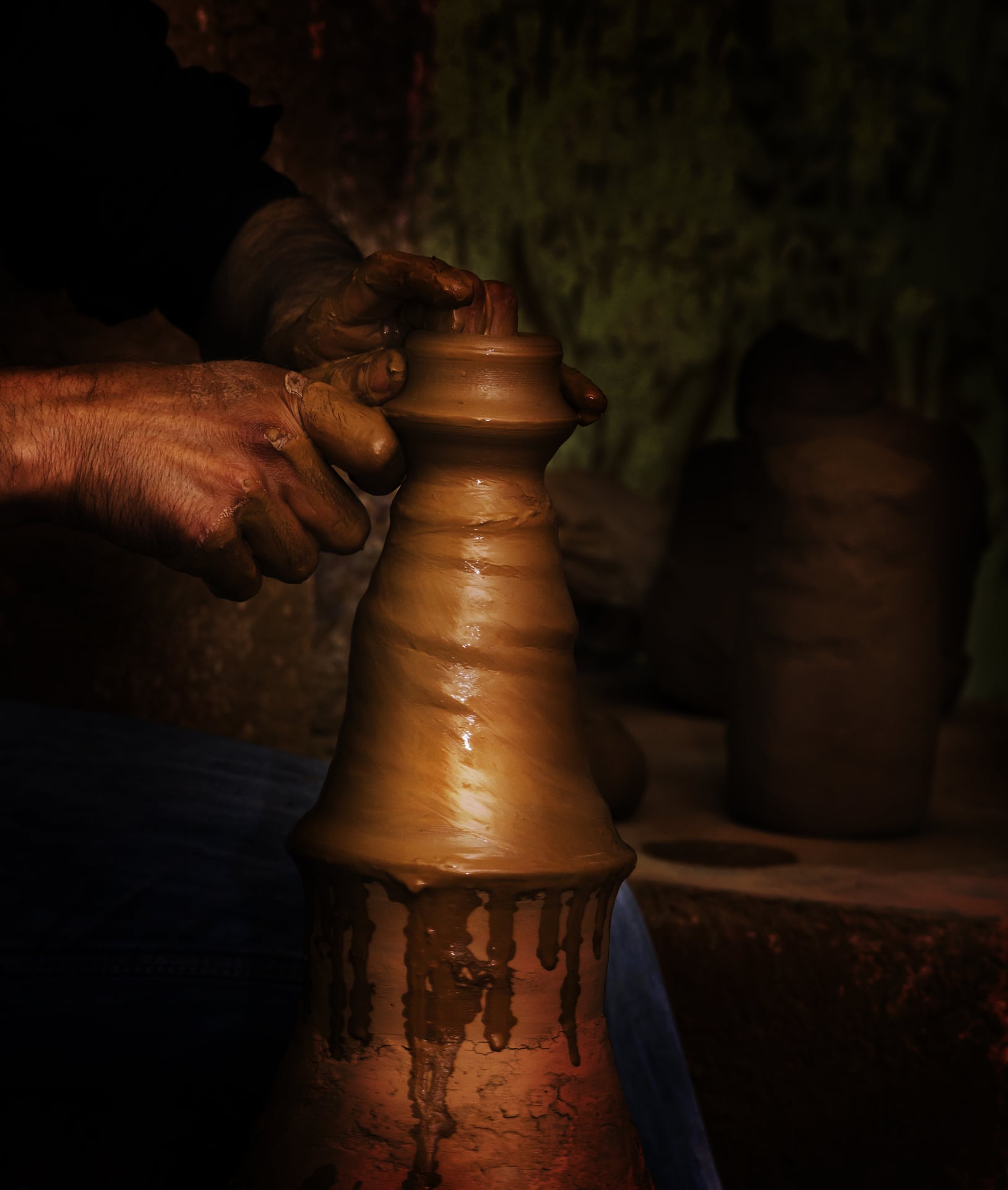How Can You Design a Small Space for a DIY Pottery Studio at Home?

Pottery making is a timeless art form that is not only therapeutic but also allows you to create functional and decorative pieces that can be a source of pride. It’s an activity that you can learn and practice right from your home. Whether you have a small room, a garage, or even just a corner in your living room, you can set up a small pottery studio. This article will guide you through designing your own DIY pottery studio at home.
Setting Up the Workspace
The first step in designing your pottery studio is determining where you will work. The ideal location is a well-lit room with ventilation and accessibility to water. However, if space is a limitation, any area that can accommodate a table for your wheel and a small kiln will suffice.
Avez-vous vu cela : What’s the Most Effective Way to Incorporate a Solarium for Plant Growth?
Remember, clay work can be messy, so a space that can easily be cleaned or won’t be ruined by clay dust or glaze spills is preferable. A concrete or tile floor is good, but a tough carpet or wood floor can also work if you protect it properly. You might consider placing a layer of plywood or waterproof canvas on top to safeguard your flooring.
Selecting Essential Pottery Tools
The tools you choose for your home pottery studio greatly affect the quality and style of your pottery pieces. In a small space, it’s essential to be selective and only invest in tools that will maximize your productivity without cluttering your workspace.
A lire également : What’s the Ideal Ergonomic Setup for a Craftsperson’s Home Workshop?
Pottery wheels are central to your pottery studio. For a small space, consider a tabletop wheel. These are compact, portable, and surprisingly powerful. When choosing a pottery wheel, consider its speed, direction (right or left-hand use), and strength (it must be able to handle the amount of clay you will work with).
Other essential tools include wire clay cutters, trimming tools, wooden modeling tools, loop and ribbon tools, brushes for glazing, and a ware board or batt to transport and store your pottery pieces.
Choosing the Right Clay and Glazes
Just as necessary as your physical workspace and tools are the clay and glazes you will work with. There are numerous types of clay suitable for home studio pottery, including earthenware, stoneware, and porcelain. Each type of clay has different working properties and requires different firing temperatures in your kiln.
Glazes are an essential part of producing attractive pottery pieces. They not only add color and texture but also make your pottery pieces functional by making them waterproof. Glazes come in a multitude of colors and finishes, from glossy to matte and everything in between.
Investing in a Kiln
Of all the equipment in your pottery studio, the kiln is probably the most significant investment. Kilns come in a variety of sizes, and for a small home studio, a table top kiln might be the best choice. It’s important to remember that while smaller kilns are more affordable and take up less space, they also limit the size of the pieces you can fire.
Kilns can also vary in how they’re powered. Electric kilns are the most common for home studios, as they can be plugged into a regular outlet and don’t require venting like a gas kiln. However, they do require a dedicated circuit, as they draw a lot of power.
Organizing Your Pottery Studio
Organization is the key to a functional small pottery studio. You need to have a clear system for storing your tools, clay, and work in progress. A simple shelf near your wheel can store your most frequently used tools. Your clay should be stored in an airtight container to keep it from drying out.
As for your works in progress, they can be kept on ware boards or in plastic bags to keep them from drying out too quickly. Finished pieces waiting to be fired can be stored on shelves or racks.
Remember that the most successful home pottery studios are those where each tool and piece of equipment has a home. This helps to maintain an efficient workflow and keeps your studio from becoming cluttered.
Designing a small pottery studio at home is not as daunting as it may seem. With careful planning and the right tools, you can create a space that not only serves your pottery-making needs but is also a sanctuary where you can express your creativity. So, roll up your sleeves, get your hands dirty and start making beautiful pottery pieces right at your home. You never know, you might just discover a new passion or even a new profession!
Hand Building Techniques & Tools
For a home pottery studio, you need to be prepared to practice various techniques. Hand building is a great way to start with pottery, especially in a small space. This pottery-making method involves shaping clay with your hands and simple tools, and it doesn’t require large equipment like a pottery wheel or a kiln.
Essential tools for hand building include a rolling pin for flattening the clay, a cutting tool for trimming and shaping, and a sponge for smoothing surfaces. A work table covered with a canvas cloth can provide a great surface for rolling, cutting, and shaping your clay. If you’re going to be hand building, a good idea is to invest in some texture tools as well. These can be used to create patterns and designs on your pottery pieces.
In addition to these tools, you might also consider purchasing a slab roller. This equipment will help you achieve uniform thickness in your slabs of clay, which is crucial for consistent and high-quality end products. A slab roller can be a great addition to your home studio if you’re planning on making pottery with larger dimensions, such as platters or sculpture work.
Remember, hand building is a fantastic way to get started with pottery. It’s a forgiving process and allows maximum creativity as you’re not restricted by the dimensions of a pottery wheel. It’s also a more accessible option for beginners or those with a smaller budget.
Taking Your Home Pottery Studio to the Next Level
Once you’ve set up your home studio and started creating pottery, you might find yourself wanting to take your hobby to the next level. Perhaps you’re considering turning your pottery passion into a pottery business. This is a significant step that requires additional planning and investment, but the rewards can be immense.
Firstly, you’ll need to consider upgrading your equipment. A larger, more efficient kiln and a professional-grade pottery wheel are good investments if you’re planning to increase your production volume. You might also need additional items like a pug mill for recycling clay and a clay extruder for making consistent shapes.
Marketing your work is another critical aspect of running a pottery business. You could consider setting up an online shop on platforms like Etsy or even creating your own website to showcase and sell your pieces. Participating in craft fairs and local markets is another great way to get your work out there and attract customers.
Running a pottery business from your home studio will require dedication and hard work, but it can also be incredibly rewarding. Not only will you be doing something you love, but you’ll also have the satisfaction of seeing others appreciate and use your creations.
Designing a small home pottery studio is indeed an attainable goal that any passionate potter can achieve. From setting up a basic workspace, selecting essential pottery tools, choosing the right clay and glazes, investing in a kiln, organizing your studio, mastering hand building techniques, to potentially running a home pottery business, each step will bring you closer to realizing your pottery dream. Above all, remember that the heart and soul of any studio is the creator. Your passion for making pottery and your dedication to learning and improving will be the driving forces behind the success of your small pottery studio. Whether it’s a hobby or a full-fledged business, your home pottery studio will become the perfect place for you to create, experiment and express your artistic vision.
